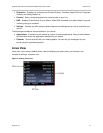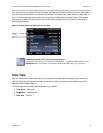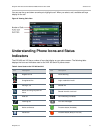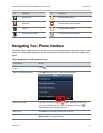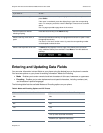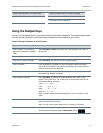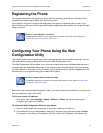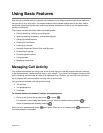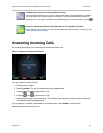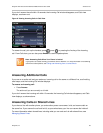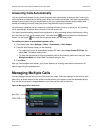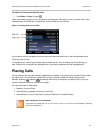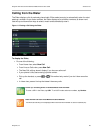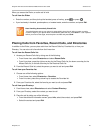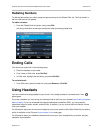
Polycom, Inc. 21
Using Basic Features
Now that you’re familiar with your phone’s user interface, you’re ready to perform basic phone tasks that
that you can do on a daily basis. This chapter explains how to handle multiple calls at one time, how to
manipulate incoming and active calls, and how to access directories and lists so you can perform tasks
quickly and efficiently.
This chapter includes information about the following tasks:
Calling, answering, holding, and ending calls
Ignoring, rejecting, forwarding, and transferring calls
Setting up conference calls
Enabling Do Not Disturb
Listening to voicemail
Handling Directories, Recent Calls, and Favorites
Customizing ringtones
Controlling phone volume
Using headsets
Managing shared lines
Managing Call Activity
Your system administrator can set up your phone to have up to six lines with unique extension numbers,
or the same extension number as other lines on your network. Your phone can manage a maximum of 24
active, incoming, and held calls at a time on all registered lines. However, you can only have one active
call in progress with numerous other incoming calls or calls on hold.
You can place and answer calls using the following:
The handset
The speakerphone
A headset
To alternate between the handset, headset, and speakerphone:
» During a call, pick up the handset, press , or press .
For example, if you’re using the handset, you can switch to headset mode by pressing , or
switch to speakerphone mode by pressing .
When you’re in speakerphone mode, glows green. When you’re in headset mode, glows green if
an analog headset is connected.



